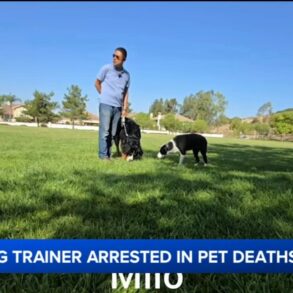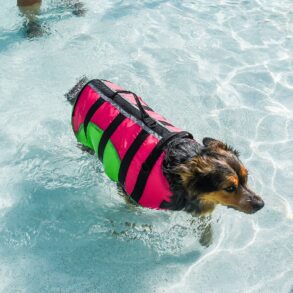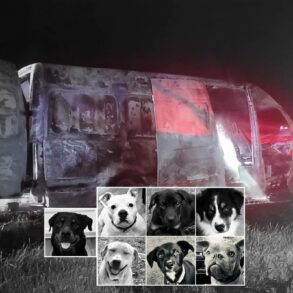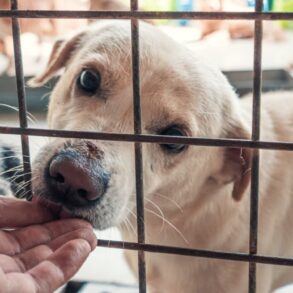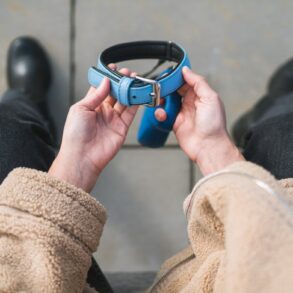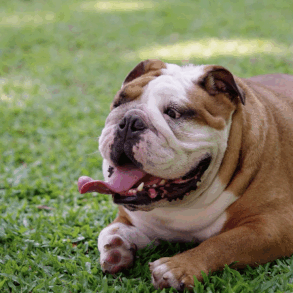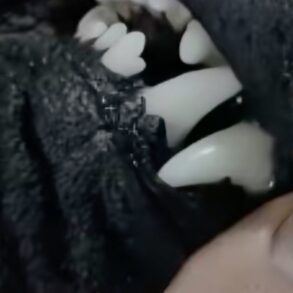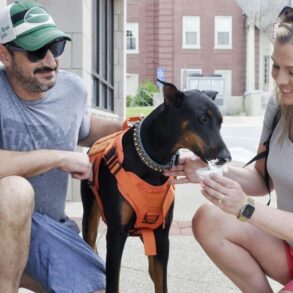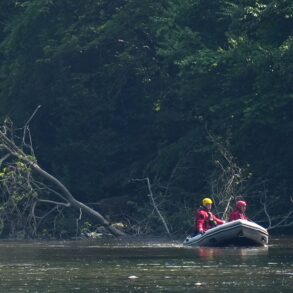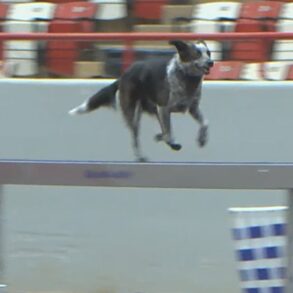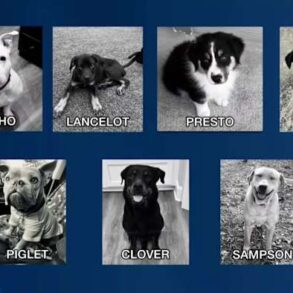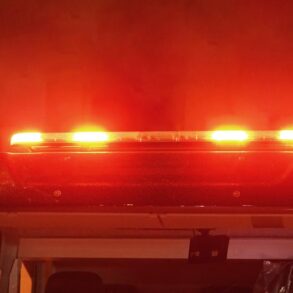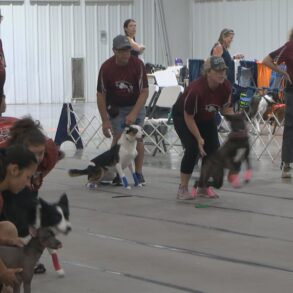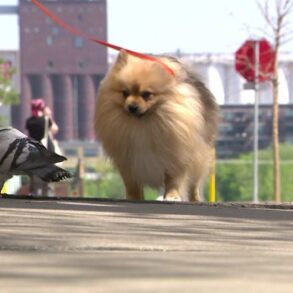While all military working dogs are impressive, Navy SEAL dogs operate on an entirely different plane. Often referred to as Multi-Purpose Canines (MPCs), these dogs are trained for extreme operations and can parachute from airplanes, rappel from helicopters, conduct amphibious missions in the water, and neutralize targets with astonishing force, reaching speeds of up to 30 miles per hour. The legendary SEAL dog Cairo played a critical role in the mission to take down Osama bin Laden, highlighting the profound impact of these animals.
These canine commandos are far more than just beneficial additions to Navy SEAL missions. They play critical, irreplaceable roles that no human, other animal, machine, or emerging technology can replicate.
Specialized Navy SEAL Dog Breeds
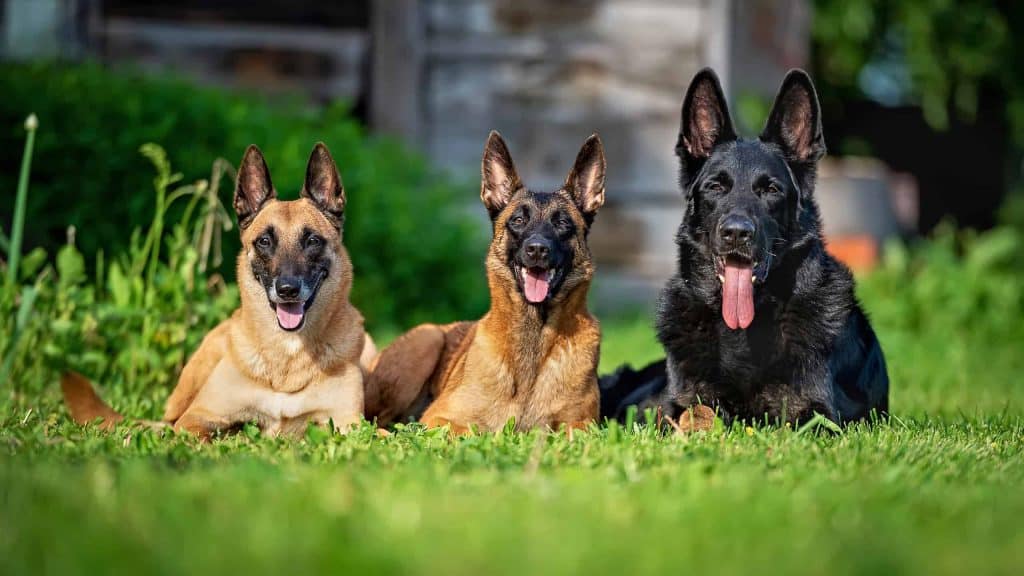
Belgian Malinois (two dogs on left) are smaller and lighter than German shepherds (dog on right).
©Julia Malsagova/Shutterstock.com
Navy SEALs partner with exceptional canines specifically chosen and trained for rigorous military operations. These dogs are not your typical pets; they are elite K9 athletes with skills far beyond those of a typical dog.
The breeds of choice for SEAL teams are primarily Belgian Malinois and Dutch shepherds. Unlike the larger German Shepherd, these breeds are lighter and more agile, making them better suited for demanding tasks like parachuting from airplanes and rappelling from helicopters.
Historically, both Malinois and Dutch shepherds were bred for herding, making them naturally fast, strong, and tough. They also have a strong protective instinct and are willing to act aggressively to protect their charges. When trained for military service, these innate traits are further nurtured and intensified. Dogs specifically bred for this purpose often show even higher levels of aggression and an extreme “prey drive”—an intense instinct to chase and capture targets at all costs.
These elite dogs also boast an extraordinarily developed sense of smell. Most Navy SEAL dogs specialize in detection work, making them amazing trackers. They are trained to sniff out everything from people and narcotics to explosives and other critical items.
While breeds like bloodhounds and Labradors are also excellent trackers and are commonly used as detection dogs, they lack the high prey drive and assertive nature required for SEAL operations. This, however, is where the Belgian Malinois truly shines. A Malinois can not only pinpoint the faintest scent, but also possesses an intense desire to pursue and capture. When on the job, these dogs are absolutely relentless; they do not get distracted or bored and must maintain their high level of focus and drive from start to finish.
What It Takes to be a SEAL Dog
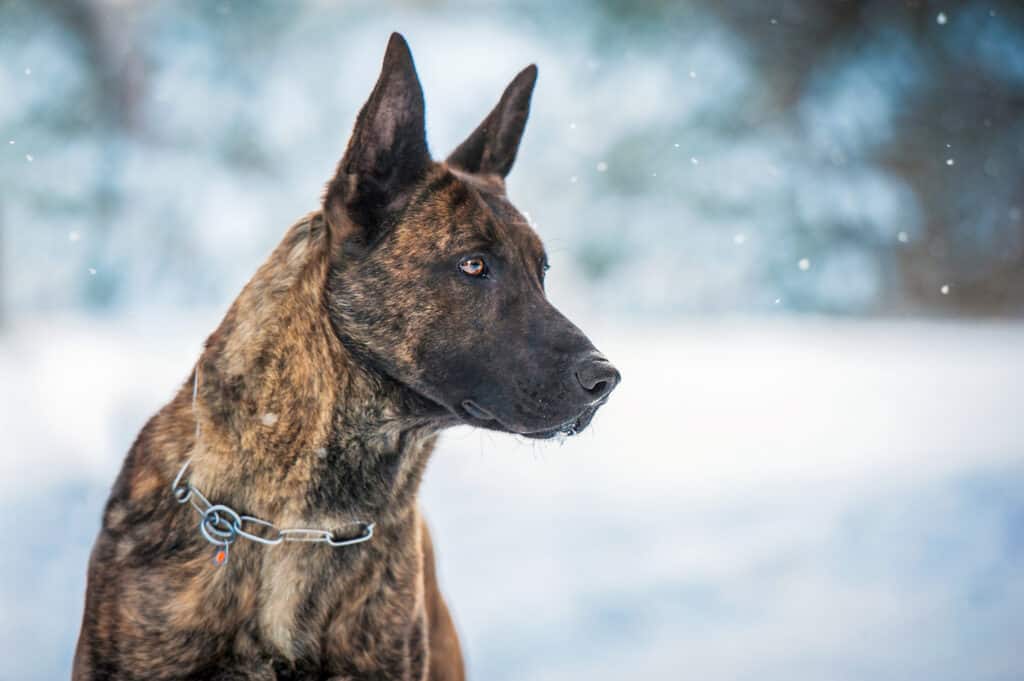
Dutch Shepherds are impressively intelligent. They love to be challenged and are eager to prove themselves.
©Rita_Kochmarjova/Shutterstock.com
Navy SEAL dogs are powerhouses and essentially the pro-athletes of their breed. They are naturally gifted thanks to selective breeding, and their intensive training hones these traits to perfection. These dogs have an incredible inner fire and a strong drive to be assertive. It’s no wonder many handlers call them “maligators” or “fur missiles” — a true testament to the power and skill of these incredible dogs. To serve with the Navy SEALs, a dog must have it all: athleticism, endurance, high prey drive, aggressiveness, determination, and adaptability. They need to perform flawlessly in all kinds of environments, even with loud and frightening distractions.
Like their human teammates, SEAL dogs never give up and hate to lose. They are relentless in their pursuits, no matter what. They cannot be spooked by anything, as it would put too many lives at risk. Navy SEAL dogs operate amidst gunfire, explosions, darkness, helicopters, rappelling, water, unstable ground, tight spaces, and parachuting, just to name a few challenging scenarios. These are not dogs that just fight defensively; they are assertive and will go on the offensive, no matter the size of their target.
Extreme Training for Extreme Missions

Belgian Malinois can jump 6 to 10 feet.
©cynoclub/Shutterstock.com
Because of their powerful instincts and innate skills, rigorous training and skilled handlers are crucial to the dogs’ success. These animals are not meant to be everyday companions; they are full-fledged members of the military. Most Navy SEAL dogs come from overseas, from kennels that have spent decades perfecting their breeding lines. To even be considered, a dog must pass a strict medical and temperament screening, evaluating their detection skills, aggressiveness, and trainability.
Once chosen, these dogs enter an intense training regimen. They become completely desensitized to the sounds of gunfire, explosions, and other loud, unpredictable noises. They learn to ride in Zodiac boats, skydive, rappel from helicopters, and chase and bite targets with unbelievable force. The dogs must respond instantly to their handler’s commands, whether the handler is beside them or giving instructions remotely via radio.
Airborne SEAL Dogs

SEAL dogs can perform tandem parachute jumps as well as individual jumps.
©GoDog Photo/Shutterstock.com
Navy SEAL dogs are trained for the most extreme situations. Take the world record for the highest man-dog parachute deployment: Mike Forsythe and his dog, Cara, jumped from over 30,100 feet! Both Cara and her handler wore skin protectors and oxygen masks to complete the jump. SEAL dogs like Cara routinely train with specialized protective gear, including body armor, headphones, and goggles. They also become accustomed to wearing radio transmitters and cameras. This helps them maintain their composure and operate effectively in highly dangerous and unpredictable environments.
The Best of the Best

SEAL dogs begin training when they are just a few weeks old.
©GoDog Photo/Shutterstock.com
Not every dog bred and selected for training will make it to the Navy SEAL level. The dogs that ultimately earn a place in the Navy SEALs are often referred to as “one percenters.” This term highlights just how exclusive this elite group is. Much like their human counterparts, only a tiny fraction of all military working dogs can meet the incredibly rigorous standards required to join the SEALs, representing the top 1% of all highly trained military working dogs. SEAL dogs must be perfectly obedient, always following commands with precision. At the same time, they also need strong, independent judgment to make smart decisions on their own when necessary.
It can cost up to $40,000 to acquire and train a single Navy SEAL dog. However, if you ask any SEAL who has worked alongside one of these remarkable animals, they will emphatically tell you it’s worth every penny. These dogs provide a unique combination of skills and support that even a dozen human soldiers or the latest technology simply cannot match.
What Navy SEAL Dogs Do
Detection
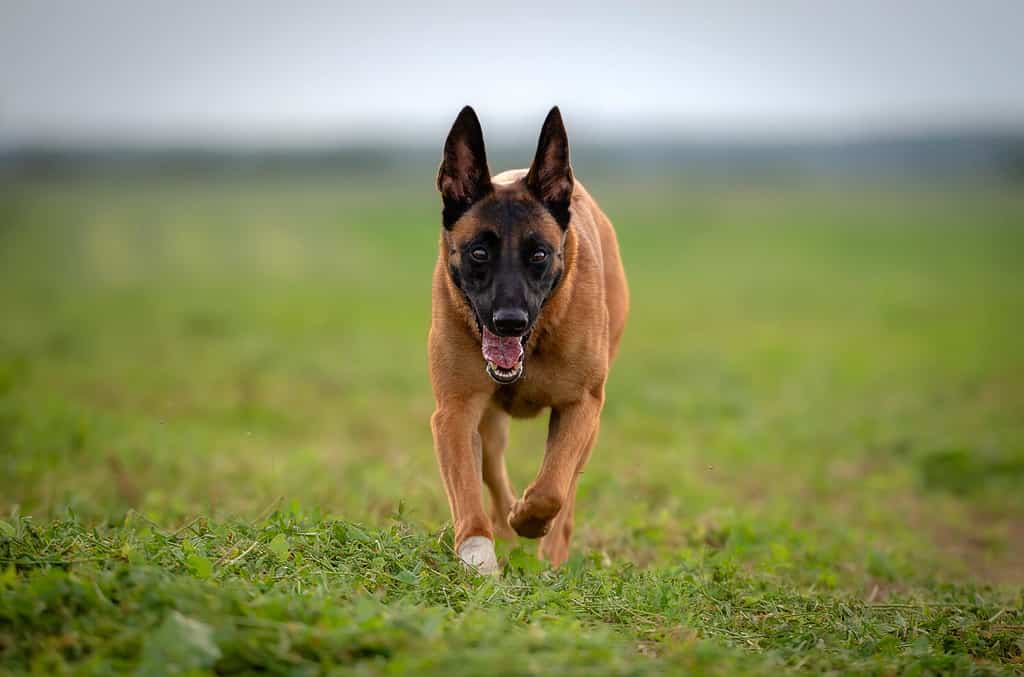
A dog’s sense of smell is 40 times better than a human’s.
©Julia Malsagova/Shutterstock.com
Navy SEAL dogs are incredibly versatile, tackling a variety of crucial tasks. They often serve as detection dogs and can locate people, weapons, and explosives much faster than any machine. In addition, their senses in the dark are far superior to even the night vision goggles worn by human SEALs.
Unlike humans, dogs are also exceptionally hard to trick, thanks to their amazingly sensitive ears and noses. For example, members of Al-Qaeda and the Taliban have tried to mask explosive odors and their own presence. While these tactics might fool humans or even some detection equipment, a Navy SEAL dog’s nose is far too sensitive to be deceived. In fact, these dogs are so perceptive that they can detect where an explosive was recently located, even if it is no longer present. SEAL dogs identify human threats and potential dangers, often while operating amid loud sounds like explosives and gunfire. They sometimes also assist in search and rescue missions, often tracking a human’s scent under layers of debris.
Clearing Missions

Many SEAL dogs wear bulletproof vests and protective goggles.
©Yvonne60/Shutterstock.com
These dogs often precede the human team, moving into an area to search for explosives and clear the path. Sometimes, they even go ahead in the water, swimming ashore to signal safe zones and identify any potential threats. A dog might also rappel from a helicopter to secure a landing spot. Their handlers can direct them with commands via radio from up to a mile away, making them invaluable assets in complex and dangerous environments.
Bite Work and Apprehension
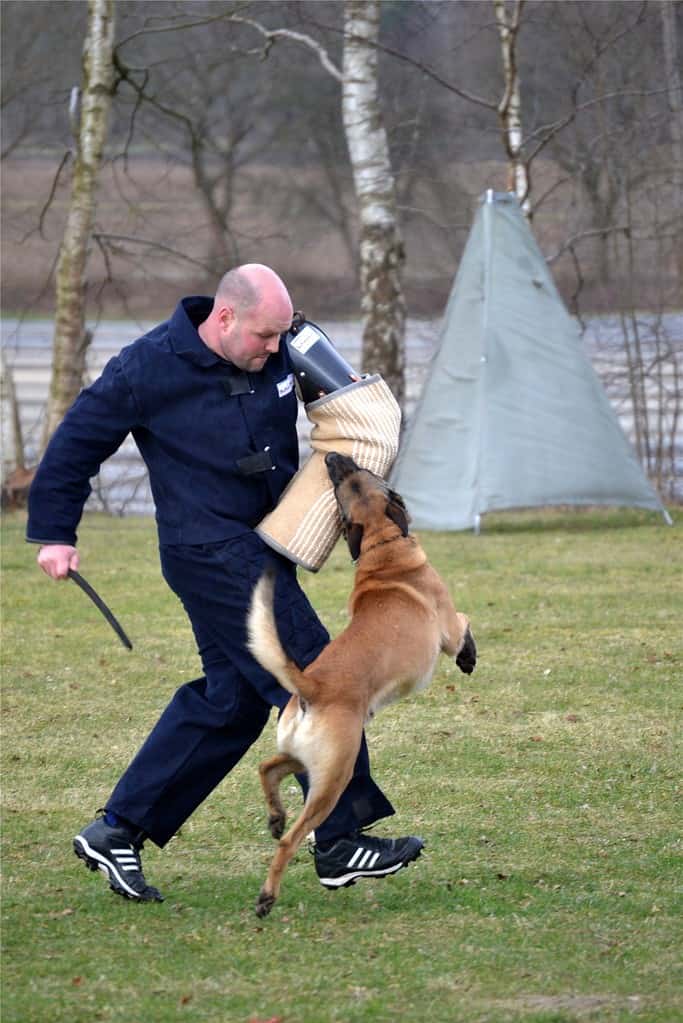
Running away with a 70-pound dog hanging off your arm would be very difficult!
Navy SEAL dogs are trained to apprehend targets, and they are incredibly effective at it. If someone tries to flee, it does not matter how fast they are — these dogs are much faster. And once they catch their target, they are trained to bite down with their full mouth for maximum grip and absolutely not let go. Even if the target screams, hits, or kicks, the dog will maintain its hold until the handler gives the command to release. The force of the dog’s bite is incredibly strong, and they love to bite. According to many SEAL dog trainers, biting down on something is the ultimate reward for these dogs.
Unbreakable Loyalty and Resilience
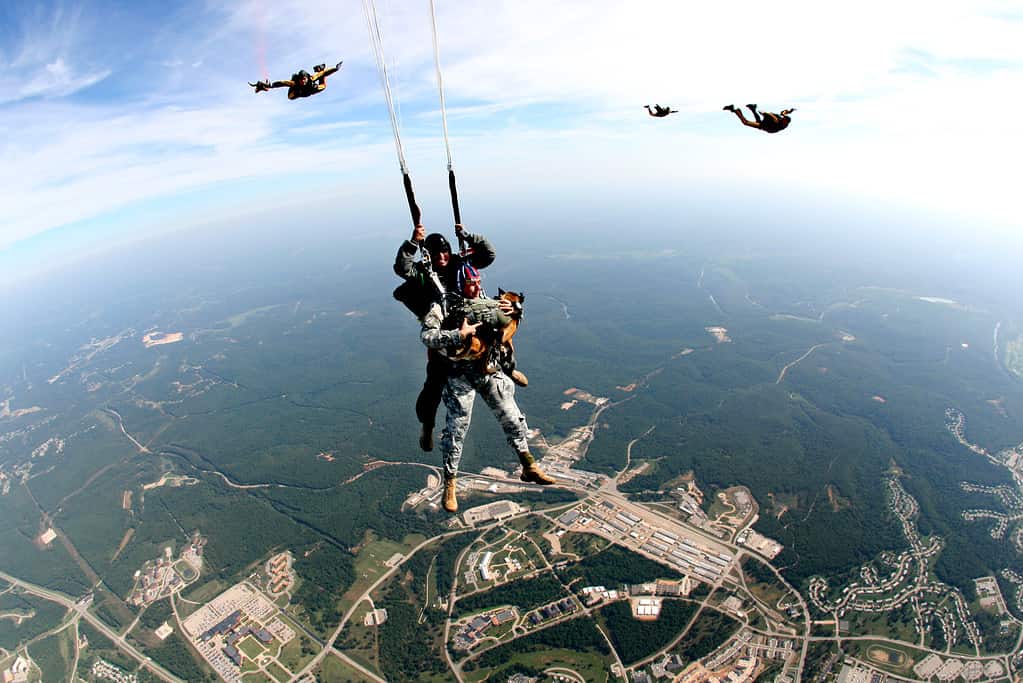
Navy SEAL dogs and their handlers trust each other with their lives.
©ESgt. Vince Vander Maarel, Public domain, via Wikimedia Commons – Original / License
Just like their human counterparts, Navy SEAL dogs can get injured in the line of duty. Fortunately, their handlers are trained in first aid, equipped to treat everything from severe bleeding to amputations. Yet, even life-threatening injuries rarely stop these remarkably resilient canines.
Take the example of Carlos, a Navy SEAL dog caught in an explosion alongside his handler during an overseas raid. The blast nearly destroyed the dog, collapsing his sinuses and lungs and breaking both hips and back legs. Despite his own severe injuries, however, Carlos’s devotion was unwavering. His handler was also injured in the blast, and the dog, refusing to give up, crawled over to guard the man until help arrived. Carlos made a full recovery and returned to service after this harrowing incident. The unbeatable devotion and loyalty of these remarkable animals cannot be overstated.
What Happens to SEAL Dogs When They Retire?
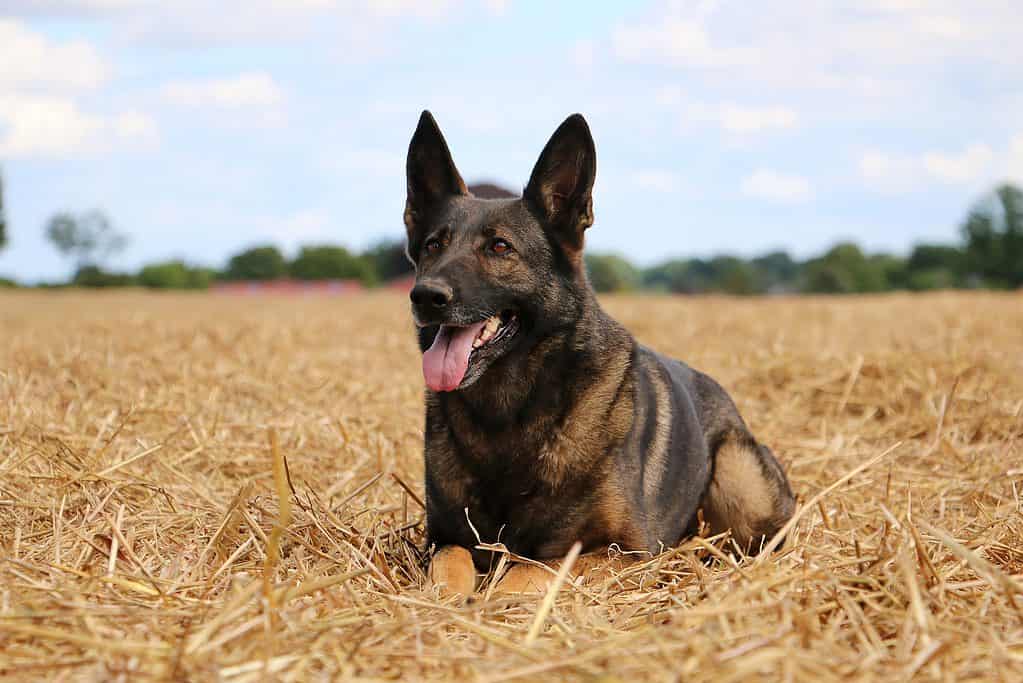
Belgian Malinois and Dutch shepherds are highly energetic dogs and require a lot of mental stimulation to thrive.
©Bianca Grueneberg/Shutterstock.com
Sadly, military dogs have not always received the respect they deserve. In past conflicts, these highly trained canines were often reassigned to less challenging roles, abandoned, or even put down once their service ended.
Fortunately, the military is learning from these past mistakes. Today, Navy SEAL dogs often retire at around seven to 10 years old. Even though they are no longer active SEALs, these amazing dogs are far from “old.” They still have incredible drive, energy, and passion. Many are even adopted by their former handlers, who can provide the right care with plenty of mental stimulation, proper nutrition, and targeted exercise.
However, former SEAL dogs cannot be adopted by just anyone. Their specialized training, unique temperaments, and past experiences mean they need careful and detailed rehabilitation before they can be adopted. Without proper rehabilitation, these dogs often struggle with issues such as:
- Touch sensitivity
- Loud noise reactivity
- Aggression
- Environmental overload
- Hyperactivity
- Extreme resource guarding
- K9 PTSD.
While some retired military working dogs face challenges in finding homes due to behavioral or health issues, most are now adopted by their handlers or through specialized organizations. Organizations like the Warrior Dog Foundation, founded by former Navy SEAL Mike Ritland, help rehabilitate these dogs and find them the right homes where they can truly enjoy their retirement. During their rehabilitation, the foundation provides a safe haven where the dogs receive specialized care and learn to adjust. These dogs give so much and absolutely deserve a peaceful and dignified retirement.
Ready to discover the top 10 cutest dog breeds in the entire world?
How about the fastest dogs, the largest dogs and those that are — quite frankly — just the kindest dogs on the planet? Each day, AZ Animals sends out lists just like this to our thousands of email subscribers. And the best part? It’s FREE. Join today by entering your email below.
This post was originally published on this site be sure to check out more of their content.






